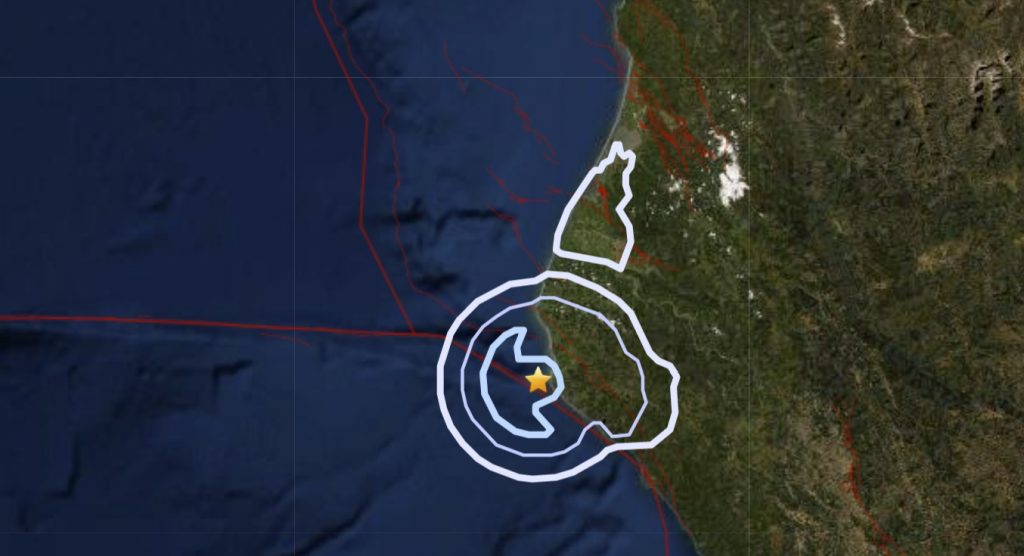Three moderately strong earthquakes hit along the Mendocino fracture zone within the last 15 hours.
The first tremor was a M3.2 – 12km WSW of Petrolia, CA

It was followed by a M4.4 – 102km W of Petrolia, CA
Is it the last tremor? One sure is clear, this small series of quakes is a clear reminder that you should be ready or preparing for the next Big One in the area.
The 1992 Petrolia earthquakes
Also known as the 1992 Cape Mendocino earthquakes, the 1992 Petrolia earthquakes occurred along the Lost Coast of Northern California on April 25 and 26.
The three largest jolts were the M7.2 thrust mainshock that struck near the unincorporated community of Petrolia midday on April 25 and two primary strike-slip aftershocks measuring 6.5 and 6.6 that followed early the next morning.
The sequence encompassed both interplate and intraplate activity that was associated with the Mendocino Triple Junction, a complex system of three major faults (including the Cascadia subduction zone, San Andreas Fault, and Mendocino Fracture Zone) that converge near Cape Mendocino.
The three shocks damaged and destroyed homes and businesses in Humboldt County and injured up to 356 people, but the single largest loss was due to a post-earthquake fire that consumed a business center in Scotia.
Thvideo below is the news coverage from Sunday, April 26, 1992, the day of the two devastating aftershocks.
No surface ruptures were present in the epicentral area, but landslides closed roads and railroad tracks for at least a week while cleanup took place. Also discovered was about 1 m (3 ft 3 in) of coastal uplift near Cape Mendocino and Punta Gorda.
As the largest earthquake in California since the 1989 Loma Prieta event several years earlier, the mainshock caused a non-destructive tsunami that quickly reached the coast, and eventually Alaska and Hawaii several hours later.
The tsunami was significant not because of its run-up, but because of the speed with which it reached the coast and for how long the waves persisted.
No comments:
Post a Comment